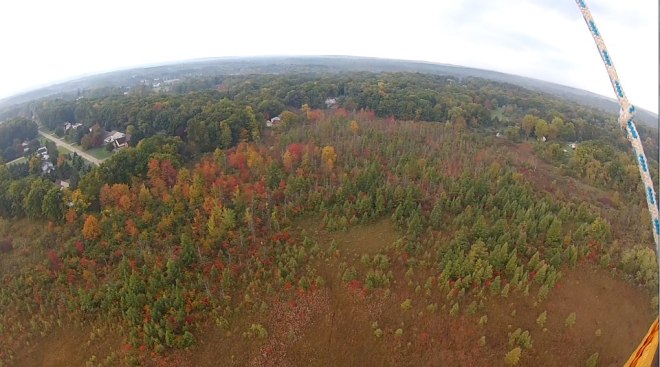I’m reviewing some literature while working on a proposal and ran across a paper by Lisa Richardson-Calfee, Roger Harris and Jody Fanelli at Virginia Tech on the effects planting date on sugar maple trees. It’s not actually the topic of the proposal I’m working on but the paper caught my eye because spring versus fall planting is one of those questions that just never seems to go away. In this particular study, balled-in-burlap trees planted at spring budbreak had more new root growth than trees planted in the fall. So does this mean spring planting is better? Not necessarily. For container-grown trees the results were basically a wash. This is fairly typical. I’ve not done an exhaustive search but I’ve looked at a fair number of studies of spring versus fall planting and they often show no clear trend or some will show spring coming out better or fall coming out better.
So why do we hear so often that “Fall is a great time to plant trees.” Well, first off, think about who is saying it. Frequently it is nurseries that are looking to unload inventory that didn’t sell during the growing season or landscapers that are looking to keep crews busy during the slow fall season. But the other part of whether fall is a good time to plant has to do with rainfall and temperature patterns. Linda Chalker-Scott is an advocate of fall planting. And for her location in western Washington – and many other locations in the West – this makes sense. If we look at average rainfall patterns for Seattle (actually Linda is in Puyallup but no one outside of the Northwest can pronounce Puyallup), planting in October – when the rainy season is getting into full swing – makes much more sense than planting in April or May before the summer dry season.

Where I live in East Lansing, on the hand, our climate has a summer maximum precipitation pattern – as does much of the Midwest. As I’m fond of telling people, there’s a reason Michigan’s Arbor Day is the last Friday in April. Spring is a great time to plant trees here because soil temps are warming and the rainy season is just getting started.

What about fall planting in the Midwest? My take is that fall is an OK time to plant trees but not necessarily the best. We typically will still have some rain in the fall but temperatures are declining quickly. Our average daily temperature in December is 28 deg. F, meaning our soils are beginning to freeze, while the average December temp in Seattle is a balmy 42 deg. F. That’s warm enough for Linda’s roots to keep growing – well, actually not Linda’s roots but Linda’s tree’s roots.
In any event, if you live in Midwest and other places with a summer max. precipitation pattern, your state’s Arbor Day is a good guide to plant trees. If you live out West in areas prone to summer drought then fall may be your best bet. This is also a another example of why it’s good to get your landscape and garden advice from local sources rather than the ‘one-size-fits-all’ advice common in many magazines and gardening websites.
Richardson-Calfee, L.E, J.R. Harris, and J.K. Fanelli. 2008. Root and Shoot Growth Response of Balled-and-Burlapped and Pot-in-Pot Sugar Maple to Transplanting at Five Phenological Growth Stages J. Environ. Hort. 26(3):171–176.

















